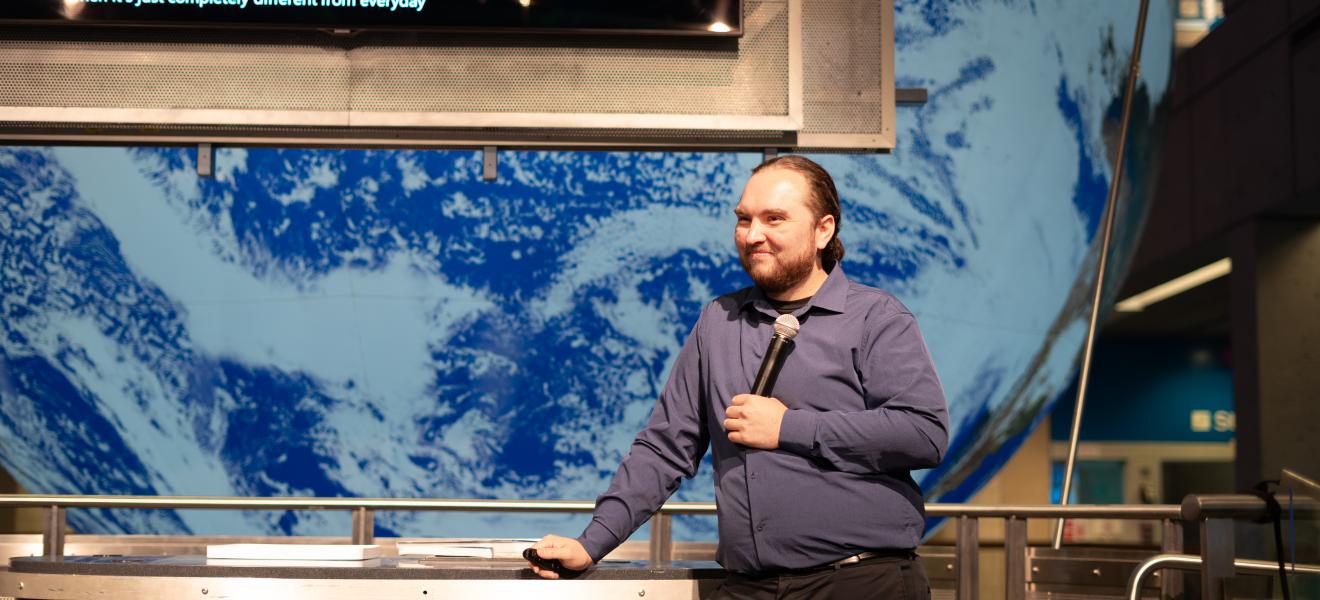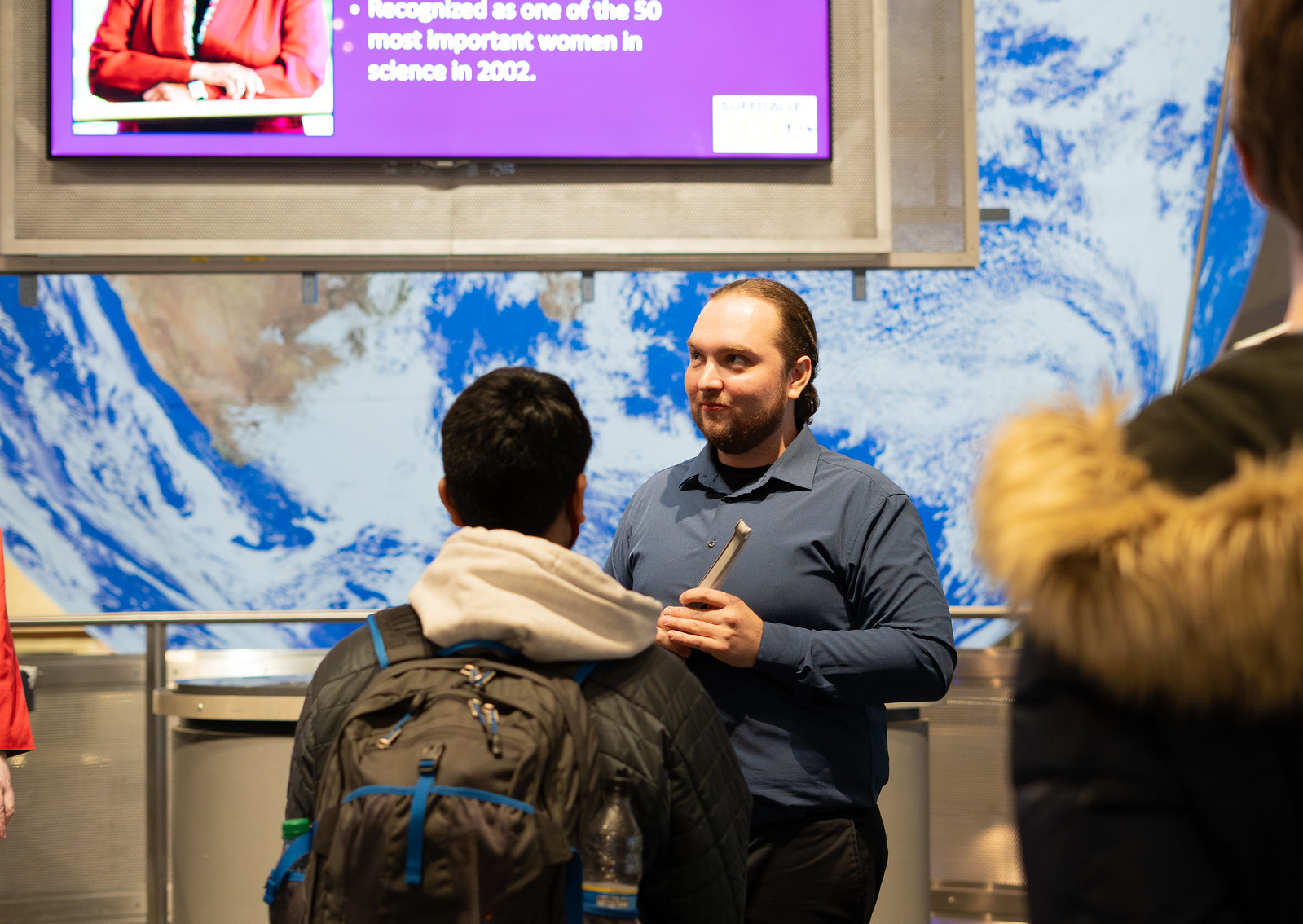Beyond the Shadow: Professor Ben Boe on the Solar Eclipse

Wentworth Professor Ben Boe speaking at the Museum of Science Boston
Fueled by the excitement of the upcoming total solar eclipse, a group of enthusiastic Museum of Science patrons listened to renowned eclipse authority Ben Boe talk about how the phenomenon happens and where he will be when it does.
Boe, who teaches in Wentworth Institute of Technology’s School of Sciences and Humanities and has a PhD in Astronomy from the University of Hawaii, took to the atrium area of the Blue Wing to explain the science behind an eclipse. He noted that while a total eclipse is rare for the Northeast, they can be seen somewhat often around the world and Boe’s team travels to view as many as they can.
Boe showed 2019 examples from Chile and Argentina, explaining that the sun's magnetic field and activity vary over time, from quiet periods with simple magnetic configurations to active phases with complex and chaotic patterns, all driven by the solar cycle.
“Throughout all of astronomy, you have a hard time with the scale of things, the distance of things,” Boe said. “It’s very difficult to wrap one's mind around it, but—at least with the sun—you see it every day, so you have some idea about how big it is and where it is.”
He continued, “Fundamentally in astronomy it’s really the art of figuring out how we can measure something from really far away. How do we infer what’s going on without being able to go there and touch it?”
Technology has certainly improved since the day that Galileo Galilei used a telescope (unsafely) to stare directly into the sun and observe sunspots. Today, astronomers have high-powered lenses that can show particles shot out from the sun, creating light in the north and south of planet Earth that create auroras, helping us better understand how things like the “Northern Lights” and solar eclipses work.
As for Boe, he will be in Texas on April 8. His team will also have sites in Arkansas and Central Mexico, as well as a NASA airplane flying around to observe high above the clouds to avoid any weather-related issues.
“You should go try to see the eclipse if you can,” he said. “The path in our region of the world goes through Buffalo, Rochester New York, it goes through Plattsburgh, Burlington Vermont. I highly recommend going up north. Budget time for extra traffic, though.”
See photos and video from Professor Boe’s talk below. You may also watch Boe’s recent appearance on WABI in Maine and view images from his trip to Texas.

